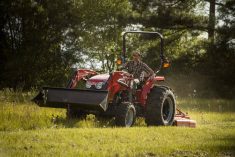U.S. Midwest farmers had difficulty seeding their crops the last two springs, and the delays led to price rallies.
Traders thought the delay would hurt yield, but in the end, the combination of good summer weather and seed genetics produced record yields.
This year, there is again a chance for challenging seeding conditions, at least early in the spring.
Recently, every week seems to carry another winter storm into the Midwest and the snow pack is building.
Worries are mounting that a rapid melt could lead to flooding.
Read Also

U.S. softens fees on Chinese shipping
The U.S. starts charging new fees on Chinese ships on Oct. 14. What are the ramifications for their ag exports?
However, after the thaw, there might not be a problem with spring rain.
The strong El Nino helping create the series of snowstorms affecting the Midwest is starting to weaken, but forecasters believe it will linger into late spring or early summer.
That could affect other areas, including the West Coast, but the U.S. Climate Prediction Center calls for normal precipitation and temperature in the Midwest for April to June.
Farmers in that region need a good spring because the harvest was late and a lot of fall fieldwork was not done.
The pace of seeding will influence the ratio of corn to soybeans. The more seeding is delayed, the more likely farmers are to shift from corn to soybeans.
A story on page 31 covers the U.S. Department of Agriculture’s early forecast of spring seeding. It sees almost three percent more corn acres and 0.6 percent less soy.
Many private forecasters think there will be more corn and soybeans than the USDA forecasts, and recent surveys by Pro Farmer and Agrisource show U.S. soybean area could rise by 1.4 percent.
By the way, the El Nino is continuing to generate rainstorms in Argentina and Brazil. A moist growing season has led to forecasts for bumper soybean and corn crops there, but the continued moisture is now leading to worries about fungal disease that could start to reduce production estimates.
However, at this point, disease is being looked at as a nuisance and not a factor that would change bumper crop forecasts.
















